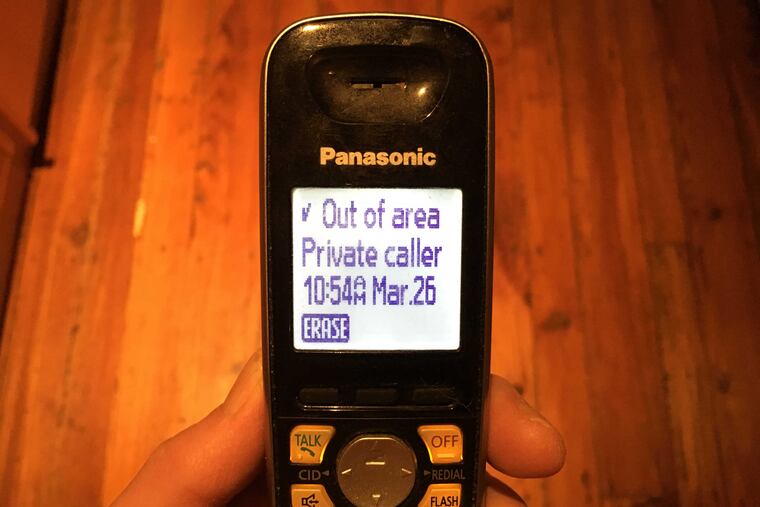Robocops unite! Those robocalls are out of hand

Are robocalls driving you mad? Last year, U.S. consumers received about 2.3 billion automated, unwanted phone calls every month, according to YouMail National Robocall Index. That's 51,523 calls every minute. Isn't it time you did something about it?
While the Do Not Call Registry at DoNotCall.gov has long been available for home and mobile phones and helps a bit, bad guys ignore it. And rule carve-outs for charities, drug stores, and political organizations are often misused.
Phone assaults will likely pick up this summer, when prerecorded representatives of the "IRS" resume their highly agitated, send-money-or-go-to-jail pitches from seemingly legit "202" (Washington, D.C.) area-code numbers.
Come fall, phone fakesters will beg again in the name of the Cancer Fund of America. Or the Veterans Fund. Or the Kids Wish Network. Seemingly benign, but actual con artists who loom large on the "50 Worst Charities in America" list, taking as much as 95 percent of the donations as "service fees."
Earlier this month, the Federal Communications Commission announced new moves to stop "IRS debt scam robocalls and other malicious caller ID spoofing." A proposed rule change would finally allow phone carriers to summarily block calls identified as nefarious.
Just a couple days later, T-Mobile jumped on board with two new protective features for its wireless customers. In milliseconds, Scam ID analyzes an incoming call against a global database of known scammers and flags the worst with a warning symbol. The opt-in Scam-Block feature blocks a bad guy's call even before it gets your attention.
And they're hardly the only mobile vigilantes. Last December, AT&T announced Call Protect, a complimentary service for iOS and Android smartphones that offers the same options. Customers can activate the feature on their My AT&T account or by downloading the AT&T Call Protect app.
Flagship Samsung phones — including the just-introduced Galaxy S8 — integrate the Smart Call developed by Hiya, a former division of Whitepages. Users can help sharpen the database by identifying unsolicited calls as general spam, debt collector, political, nonprofit, telemarketer, survey, scam, fraud, or IRS scam.
The iPhone iteration of Hiya and other apps such as TrueCaller work differently. Not willing to divert your incoming calls even momentarily for third-party analysis, Apple's CallKit framework requires the app supplier to download a list of known offenders, which are then flagged as "suspected spam."
Home phones par excellence. While the regulations could soon change, the FCC's Call Completion rules have tied the hands of home-phone service providers.
This explains why Verizon Fios Digital Voice and Comcast Xfinity have recommended that irate phone customers sign up for such third-party services as Nomorobo. Offered by the Telephone Science Corp., Nomorobo was the grand-prize winner of an FCC-sponsored call-blocking competition and boasts 750,000 users. Doesn't hurt that it's free for users of all voice-over- Internet delivered phone systems — so Ooma and Vonage customers can exploit it, as well. The mobile-phone version for iOS devices carries a $2.99-a-month fee because of its higher maintenance.
Want to take the law into your own hands? "Landline" (home/small office) phone systems from Panasonic that feature both LCD screens and Voice-Caller ID are particularly helpful — a sanity saver in the Gizmo Guy's house and getting better every year.
Traditionally, the ubiquitous Caller ID service sends a digitally coded packet of the caller's name and phone number, between the first and second rings, to be converted into alphanumeric symbols that show up on the phone screen. But in Panasonic phones, the information also undergoes a text-to-voice conversion, even in bargain models lacking an LCD screen. So the incoming call is also announced in a robotic-female voice as "Private Caller" or "Anonymous."
And what's brand new in models such as the KX-TG785SK and KX-TGD563G hitting stores and sites in the next few months? "Text-to-voice conversion in Spanish as well as English, your choice," detailed Nick Monaco, Panasonic's senior product manager for telephones and connected home. "Nobody else has that."
If your hearing ain't what it used to be, land on Panny's current KX-TGM-series amplified phones, which can even slow down what the other person is saying.
The maker has also upgraded its call-blocking feature. Now there's a dedicated activation button on each handset. Tap it once when a telemarketer interrupts dinner and the offender will never fool you again. The number is thereafter blocked after just half a ring. Yes, other cordless phone makers also build in call blocking, but with smaller memory chips that limit recognition to 30 numbers, at most. New Panasonic phones can store and block 60, 100, or 250 undesirables.